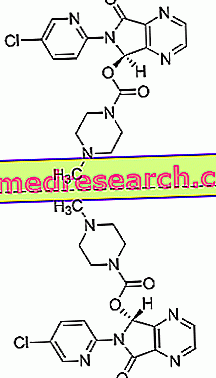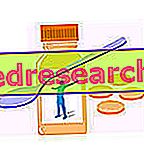Dietary fiber is given by residues of edible plant cells resistant to human digestive enzymes.
The term dietary fiber refers to a set of compounds of plant origin, of a very different physiochemical nature and molecular complexity, characterized by the fact that they are without distinction, all resistant to the hydrolysis of digestive enzymes and absorption.
These substances can be fermented by the bacterial flora of the colon, producing methane, carbon dioxide, water and volatile fatty acids (essentially acetic, propionic and butyric acid).
Dietary fiber is divided between the two main classes: soluble fiber and insoluble fiber.

THE NON-SOLUBLE FIBER, non-fermentable, absorbs significant amounts of water, increasing the volume of the faeces, which become abundant, thick and softer. This allows to stimulate the speed of transit in the intestinal lumen, consequently, to decrease the absorption of nutrients. This explains why soluble fiber has, unlike insoluble fiber, more constipating than laxative action (unless it is taken together with large quantities of liquids).
Watch the video
X Watch the video on youtubeDietary fiber functions
The fiber prevents some cancers of the rectum and colon thanks to its hygroscopic properties (the retained water dilutes the toxic substances present in the intestinal lumen, moreover the increase of the transit speed decreases the contact time between the toxins and the wall intestinal).
Prevention and treatment of obesity: it increases the sense of satiety, interferes with the absorption of sugars and Fats (hypocholesterolizing and hypotriglycerizing action) and decreases the insulin response.
The soluble fiber produces propionic acid by fermentation which reduces the hepatic synthesis of cholesterol. It also interferes with the reabsorption of bile acids with consequent greater use of cholesterol (cholesterol is the precursor of bile acids) by the liver.
Prebiotic effects: dietary fiber stimulates the growth of bacterial species with probiotic action favoring the balance of intestinal microflora.
As for the diversification between soluble and insoluble fibers, it can be generalized by stating that soluble fibers contribute to controlling glycaemia and cholesterolemia, while insoluble fibers help regulate intestinal functions.
| An adequate intake of dietary fiber contributes to preventing conditions at the limits with the disease such as mild dyslipidemias, colon diverticulosis, constipation, overweight or other situations, such as coronary heart disease, atherosclerosis, diabetes, obesity and others dysmetabolic diseases, malignant tumors of the large intestine, gall bladder stones. See also: Diet and cancer |
Dietary fiber can exert a protective action against colorectal cancer for the following reasons:
the insoluble fiber increases the transit speed, reducing the concentration of potentially cytotoxic and cytostatic substances and the contact times with the intestinal mucosa;
soluble fiber reduces intestinal pH, this inhibits the activity of potentially harmful microorganisms and favors the presence of beneficial ones, decreasing the concentration in the intestine of cytotoxic nitrogen molecules;
finally, butyrate (a derivative of dietary fiber that is formed in the large intestine by the local bacterial flora) could directly modulate cell replication and differentiation.
Foods rich in fiber: legumes, broccoli, artichokes, almonds, wholemeal flour, oats and in general all foods of vegetable origin.
The soluble fiber is present above all in fruit and vegetables, that which is not soluble in cereals and in some types of vegetables.
Recommended daily ration: about 20-35 g per day (with a 3/1 ratio between insoluble and water-soluble fibers); for the child 5 g per day plus 1 g multiplied by age.
Overdoing it with dietary fiber intake can be dangerous. Too much fiber brings in fact an excess of phytic acid, a substance that hinders the absorption of some minerals including calcium, selenium, iron and zinc. It should also be remembered that the external part of the grain, which is normally removed during refining, is the most exposed to the chemicals used in agriculture. For this reason it is good to ascertain the origin of the whole food purchased, in order to avoid the introduction of substances harmful to our body.
FIBER IN FOODS
Glucomannan
| FOODS with higher dietary fiber content | TOTAL FIBER | |
Pure bran | 44% | |
Fresh / dried vegetables | Beans, lentils, peas | 10-25% |
Dried fruit | Dried figs, raisins, prunes | 10-15% |
Bread and pasta integrals | 10% | |
Oilseeds | Almonds, walnuts, hazelnuts, peanuts | 6-14% |
fresh fruit | Cherries, apples, pears, peaches, oranges | 1.5-2% |
Fresh / cooked vegetables | Carrots, spinach, celery, tomatoes, peppers, fennel | 1-3% |
White flour | 1.5-2% | |
Other | Oil, white sugar, meats, soft drinks | Almost 0% |
Dietary fiber and prebiotics
The prebiotics are a very important metabolic substrate for the intestinal bacterial flora, of which they stimulate the growth determining benefits for the whole organism. Fructooligosaccharides (FOS) and inulin belong to this category.
Dietary fiber is the best known contributor of probiotic substances and the growing interest in these molecules is a further confirmation of its health properties.



